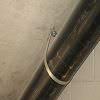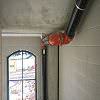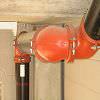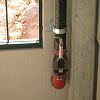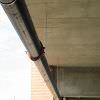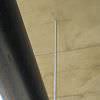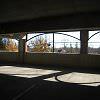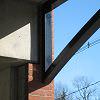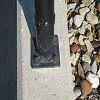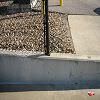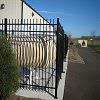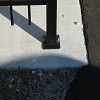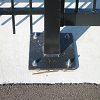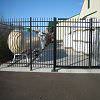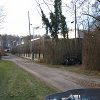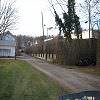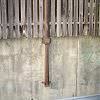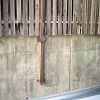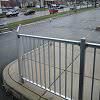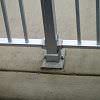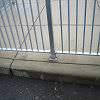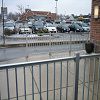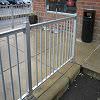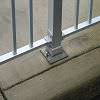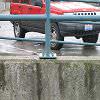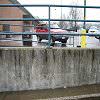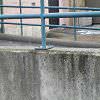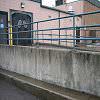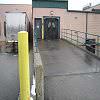Red Head® Wedge Anchor Installation
The installation of Red Head® wedge anchors is fairly simple and straightforward. Some of the factors that must be taken into consideration before...
Anchor Types
The Red Head® wedge anchor is manufactured in different materials and plated differently to meet different application requirements. If the application is indoors with no moisture present then the zinc plated Red Head® wedge anchor can be used. In applications where moisture is present then the hot-dipped galvanized should be considered. The 304 stainless steel may be the best choice when the anchor will be in wet environments. For applications where the Red Head® wedge anchor is submerged in chemicals and water, the 316 stainless steel Red Head® wedge anchor may be the best choice.
Wedge Anchor Diameters
The diameter of wedge anchor chosen for any particular application depends on holding value requirements and the size of the hole in the fixture that is being fastened. An engineer that has calculated the values needed to correctly determine the specific diameter of Red Head® wedge anchor to use may specify the holding value requirements. If the item that is being fastened has holes in it for attachment, the Red Head wedge anchor chosen must fit through the holes. If the Red Head® wedge anchor is installed with the fixture in place, it is important to know that the diameter of the Redhead wedge anchor is larger than the designated diameter. In other words, the wedge anchor measures larger than the diameter that it is called. For example, a 3/8” Red Head® anchor will require a 7/16” hole in the fixture for it to be inserted through the hole while the fixture is in place. Even though the working part of the Red Head® wedge anchor is larger, the threaded part of the anchor is equal to the designated diameter, i.e., a 3/8” Red Head® wedge anchor uses a 3/8” nut.
Depth of Embedment
Each diameter of Red Head® wedge anchor has a specific minimum embedment depth for which it must be installed in the concrete in order to meet the minimum holding values. This minimum embedment is the distance that the anchor body is installed in the concrete after the Red Head® wedge anchor has been expanded. Embedment depth at less than minimum embedment will decrease the holding values, or result in no holding values at all.
The minimum embedment depths for the Red Head® wedge anchor are as follows:
| Red Head® Wedge Anchor Diameter | Minimum Embedment Depth |
|---|---|
| 1/4” | 1-1/8” |
| 3/8” | 1-1/4” |
| 1/2” | 2-1/4” |
| 5/8” | 2-3/4” |
| 3/4” | 3-1/4 |
| 7/8” | 3-3/4 |
| 1” | 4-1/2” |
The Red Head® wedge anchor can be installed at deeper embedment depth than the minimum embedment requirement. Deeper embedments in most cases will result in greater holding values. Better holding strength will be reached when rebar is present and the embedment of the Red Head® wedge anchor is past the rebar. There are two important facts that must be taken into consideration with respect to deeper embedment depths. The thickness of the concrete is important because the Red Head® wedge anchor should not be embedded within a minimum of 5 anchor diameters from the unsupported edge of the concrete to ensure proper holding values. Deeper embedments require a deeper longer hole to be drilled; the longer and deeper the hole then the more difficult it is to drill the hole straight. If the hole is not perfectly straight then the Red Head® wedge anchor, once installed, may get to a point where it stops penetrating the hole because it is hitting the side of the hole where the hole bends and the wedge anchor does not. At this point, there is a problem because the wedge anchor will not go in any deeper and cannot be taken out of the hole.
Length
The minimum length of the Red Head® wedge anchor to use in any particular application is determined by adding the thickness of the material being fastened to the minimum embedment plus space for the nut and washer. The space for the nut and washer is equal to the diameter Red Head® wedge anchor being installed. Once this has been figured out, then a length of Red Head® wedge anchor that is equal to or longer than the minimum length requirement must be selected. Longer lengths may be used but considerations must be taken, as previously explained.
Spacing
For each diameter, the Red Head® wedge anchor must be installed a specific distance from each other and from an unsupported edge of the concrete. There are a number of different categories in addition to edge distance that are required to obtain maximum working load: minimum edge distance at which load factor is equal to 60%, minimum edge distance at which the load factor is equal to 20%, spacing require to obtain maximum working load and minimum allowable spacing between anchor with a load factor equal to 40%. What the charts show is that the closer the Redhead wedge anchors are to each other or closer to an unsupported edge then the less the holding value. The full and complete chart can be viewed at Recommended Edge and Spacing Distance Requirements for Shear Loads.
ITW Red Head® Wedge Anchor Installation
The following installation instructions are taken directly from the instruction page on the Red Head® wedge anchor web page at ITW Red Head, and show exactly what the manufacturer states to be the correct method of installation.
- Select a carbide drill bit with a diameter equal to the anchor diameter. Drill hole to any depth exceeding the desired embedment. See chart for the minimum recommended embedment.
- Clean the hole or continue drilling additional depth to accommodate drill fines.
- Assemble washer and nut, leaving nut flush with the end of the anchor to protect threads. Drive anchor through the material to be fastened until the washer is flush with the surface of the material.
- Expand anchor by tightening nut 3-5 turns past the hand tight position, or to the specified torque requirement.
concrete Fastening Systems, Inc Installation Instructions
- Using a hammer drill that is set in the hammer and rotation mode, with a carbide tipped bit that meets ANSI standards and is the same diameter as the Red Head® wedge anchor being installed, drill a hole in the concrete. Drill the depth of the hole slightly deeper than the expected embedment depth chosen making sure that the minimum embedment depth for the diameter of Red Head® wedge anchor is met.
- Clean the hole out of all dust and debris using a wire brush, vacuum or compressed air.
- Install washer and nut onto the threaded end of the Red Head® wedge anchor, leaving the nut flush with the top of the anchor body. This will protect the threads during installation.
- Insert Red Head® through the fixture be fastened and into the hole in the concrete, using a hammer strike the nutted end of the Red Head® wedge anchor until the washer and nut are tight against the surface of the fixture.
- Finger tighten the nut and then with a wrench turn the nut clockwise 3 to 5 full turns or until the specified torque values for the diameter of Red Head® wedge anchor is reached.
Red Head® Wedge Anchor Installation Torque
| Diameter | Torque Ft/lbs |
|---|---|
| 1/4” | 4 |
| 3/8” | 25 |
| 1/2” | 55 |
| 5/8” | 90 |
| 3/4” | 110 |
| 7/8” | 250 |
| 1” | 300 |
concrete Fastening Systems, Inc.
Wedge Anchors
Recent Posts
-
Best Masonry Anchors
Get the job done right the first time by using the best masonry anchors for the application. A mason …Nov 24th 2020 -
Best Cinder Block Fasteners
Fastening to Cinder Block Cinder block …Jun 16th 2020 -
Best Brick Anchors
Male or Female Anchor? Female anchors would require the spotting of the anchor and then place th …Feb 21st 2019


